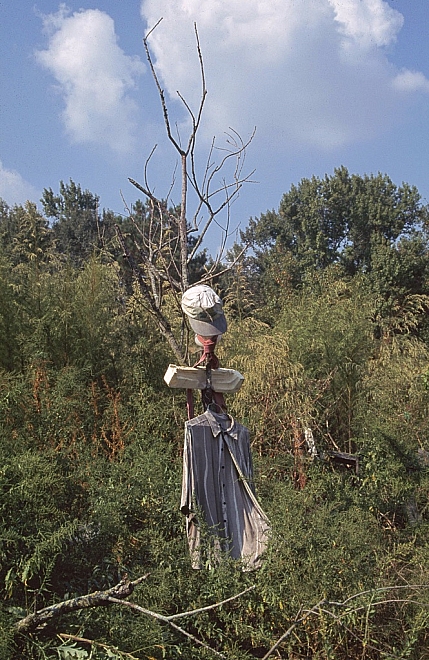"Scarecrow"
In the field on the back side of the property stands an assortment of scarecrows. One is minimal—a white cloth garment draped over the branch of a small tree. One is an interesting little abstract sculpture composed of a piece of corrugated tin painted green, a segment of a metal post, and two white plastic bottles, all wired together. A shirt, a cap, a necktie, a slab of Styrofoam, and a plastic jug make up the third, more typical scarecrow. But there are no crops growing here. In fact, the field is overgrown with almost everything except crop plants. Crows wouldn’t be interested. So what do these scarecrows scare? (Artist Mary T. Smith used scarecrows similarly in her yard.)
“Well, they are used for something else, mostly on the healing side,” Gilchrist explains. The most elaborate scarecrow, in fact, has nothing to do with healing in the traditional sense, but is employed in another of Gilchrist’s repertoire of services. He is happy to explain, giving what amounts to an advertisement for this particular talent:
"If someone is searching to avenge, if you got somebody doing bad to you, you come to me. You got to give me the name of that person. I pick a hat from inside that represents your case. I switch it out with the hat on the scarecrow. When the full moon comes, I take that hat off of the scarecrow and wear it to the graveyard. I carry a special metal powder with me. I pow-wow around the grave and do what I have to do—I have a way to dance around, and I say what got to be said. My fee for doing it is $265.02. Exactly. It works. People can tell you."
Drupal Theme and Development By: Cheeky Monkey Media
Site Design By: Constructive
